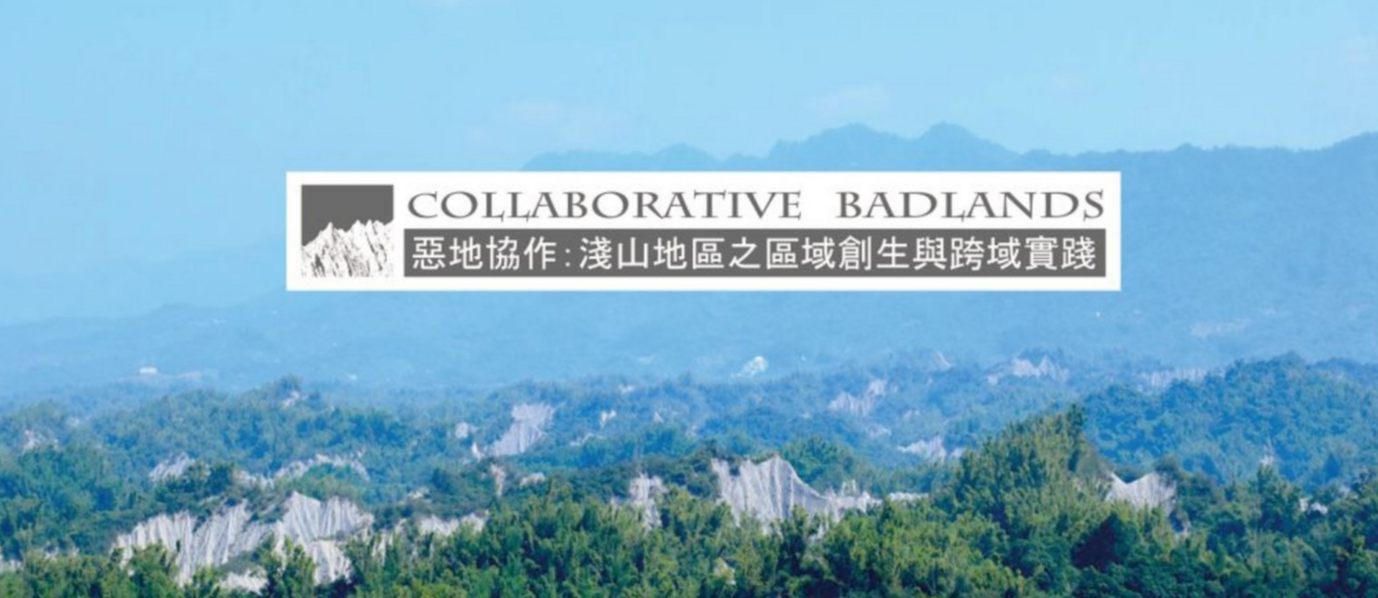Collaborative Badlands: Rural Regeneration and Transdisciplinary Co-Creation in the Southwestern Badlands Region


 Current LocationCollaborative Badlands: Rural Regeneration and Transdisciplinary Co-Creation in the Southwestern Badlands Region
Current LocationCollaborative Badlands: Rural Regeneration and Transdisciplinary Co-Creation in the Southwestern Badlands RegionHumanitarian Architecture in Action—The Story of Zuojhen and Us
What can a college general education course bring to local industry connection and economic sustainability when it connects architecture to the community? Wishing to do something for remote villages, Prof. Chien Sheng-Fen from the Department of Architecture accepted an invitation from the Research Center for Humanities and Social Sciences to offer in 2015 the first field-based general education course— “Humanitarian Architecture in Action.” This endeavor borrowed from the experiences of Chien Chih-Ming (now Chief Executive of the Association of Humanitarian Architecture) when he was in the Humanitarian Architecture Laboratory at National Chiao Tung University.
According to Prof. Chien Sheng-Fen, “Humanitarian means to care about people, and architecture is, broadly speaking, the living space of people. People’s lives are inseparable from architecture.” The starting point for offering this undergraduate general education course was as simple as wanting to take the students to Zuojhen to help the communities collect information on old buildings, hoping that more students would go into communities and care about rural environments as a result.
Seven years have been invested in the course since, and in 2020, it joined the USR Collaborative Badlands Project. Prof. Chien and the community partner, Zuojhen Gongguan Community Development Association, have transformed the original simple task of collecting information into volunteer tourism, which gives the students some responsibilities and shifts human resources into these remote areas. The course takes the students deep into the various settlements. They visit the locals, survey and map old buildings, and collect life stories. The course allows the students to learn during the trip, following the motto “learn by doing and have fun too.” In the process of practice, the students physically go into the communities and transform and organize their experiences and the information, text, and images that they collect, so that the story of Zuojhen no longer belongs to the residents alone but also to the lives of these students. It has now become the “story of Zuojhen and us.”
Through the course “Humanitarian Architecture in Action,” Prof. Chien planted both curiosity and concern for these remote villages in the hearts of the students, hoping that these seeds would sprout in the badlands. After completing the course, a group of students full of passion and concerns for Zuojhen and the southwestern badland region formed the NCKU Badland Empowerment Sustainability Taskforce (BEST), committed to “becoming the best collaborative partners of the communities”. They continue to dedicate themselves to the field on their own initiative, and by collaborating with local partners using different methods and connections, they explore together all kinds of possibilities for rural regeneration. NCKU BEST assisted the Zuojhen Gongguan Community Development Association to hold the first Arrowroot Festival and Moon Food Festival. After multiple experiences in locating resources and proposing plans, they gradually established a team operation model for collaborating with different local teams to develop the tourism industry in these communities. BEST is now operating beyond Zuojhen. Through the “Youth Travel in Taiwan” program hosted by the Youth Development Administration of the Ministry of Education, BEST has walked the Maxwell and Thomson Trail and entered other rural areas such as Neimen, Shanlin, Jiasian, etc. This traveling project that involved local communities while reliving history has won the Walk-and-Read Award. Together with Tianliao’s Moon World Farmers group, BEST also applied for the Ministry of Culture’s Youth Village Cultural Action Project, hoping to document the special agricultural culture and industrial stories of the badlands. At present, BEST is collaborating with the community partners to apply for funding via the 2021 Social Construction Action Project to build space in the villages to attract relational demography to move into the area.
Prof. Jian’s “Humanitarian Architecture in Action” general education course reconnects the architectural space to local stories through tourism, surveying and mapping, interviews, and practice. By combining the five senses and humanitarian purposes, the unique local features that are key to rural regeneration are deeply planted in the hearts of the students and community partners to lay a critical foundation for the development of badland industries and innovative practices in the future. “The Story of Zuojhen and Us” is a documentary of National Cheng Kung University’s effort in connecting to the relational demography and cultivating cross-disciplinary talent in this rural area. Prof. Chien’s educational efforts in the badlands have taken the first steps, and after seven years of continuous practice and adjustments, sustainable rural development has begun to blossom and bear fruit.